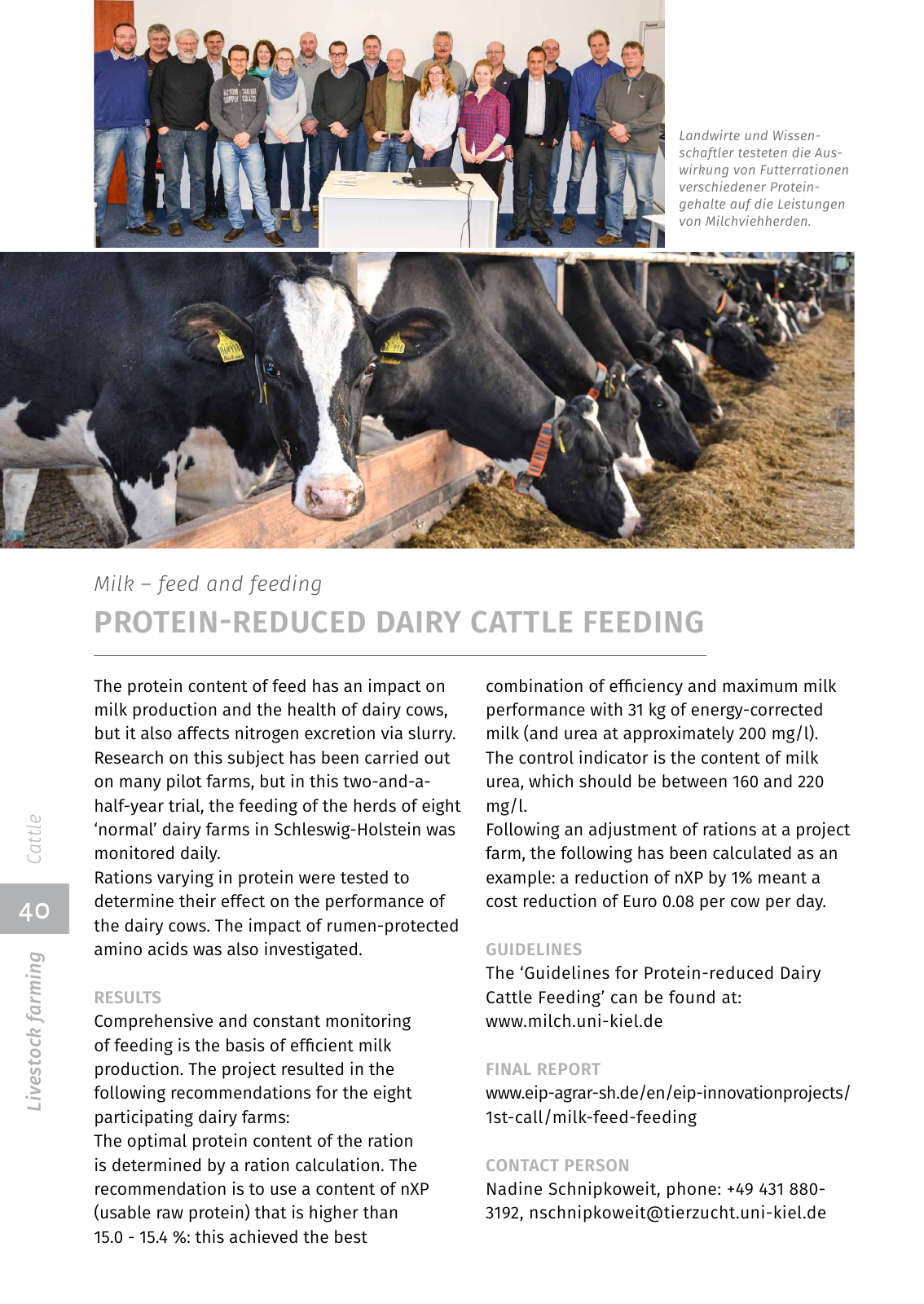40 The protein content of feed has an impact on milk production and the health of dairy cows but it also affects nitrogen excretion via slurry Research on this subject has been carried out on many pilot farms but in this two and a half year trial the feeding of the herds of eight normal dairy farms in Schleswig Holstein was monitored daily Rations varying in protein were tested to determine their effect on the performance of the dairy cows The impact of rumen protected amino acids was also investigated RESULTS Comprehensive and constant monitoring of feeding is the basis of efficient milk production The project resulted in the following recommendations for the eight participating dairy farms The optimal protein content of the ration is determined by a ration calculation The recommendation is to use a content of nXP usable raw protein that is higher than 15 0 15 4 this achieved the best combination of efficiency and maximum milk performance with 31 kg of energy corrected milk and urea at approximately 200 mg l The control indicator is the content of milk urea which should be between 160 and 220 mg l Following an adjustment of rations at a project farm the following has been calculated as an example a reduction of nXP by 1 meant a cost reduction of Euro 0 08 per cow per day GUIDELINES The Guidelines for Protein reduced Dairy Cattle Feeding can be found at www milch uni kiel de FINAL REPORT www eip agrar sh de en eip innovationprojects 1st call milk feed feeding CONTACT PERSON Nadine Schnipkoweit phone 49 431 880 3192 nschnipkoweit tierzucht uni kiel de PROTEIN REDUCED DAIRY CATTLE FEEDING Milk feed and feeding Landwirte und Wissen schaftler testeten die Aus wirkung von Futterrationen verschiedener Protein gehalte auf die Leistungen von Milchviehherden Li ve st oc k fa rm in g Ca tt le

Hinweis: Dies ist eine maschinenlesbare No-Flash Ansicht.
Klicken Sie hier um zur Online-Version zu gelangen.
Klicken Sie hier um zur Online-Version zu gelangen.